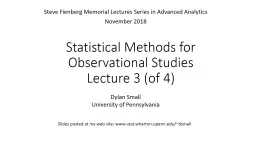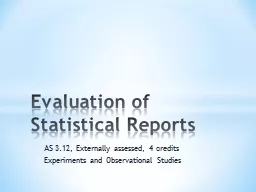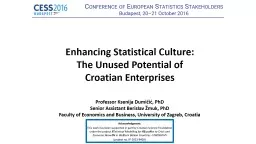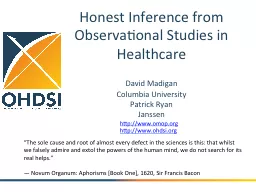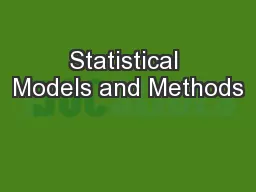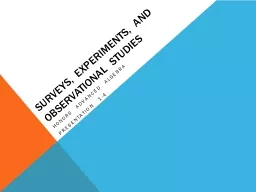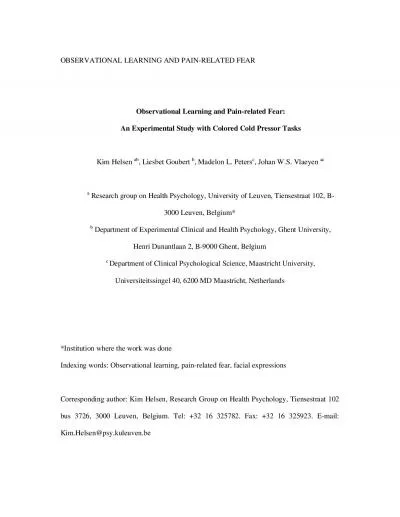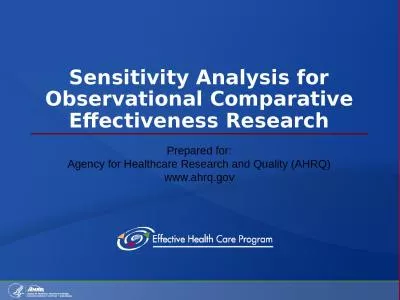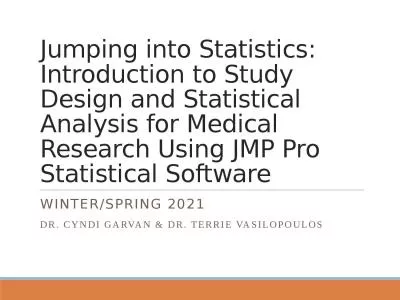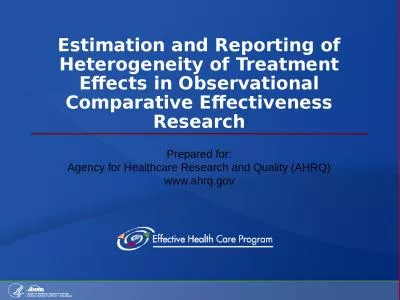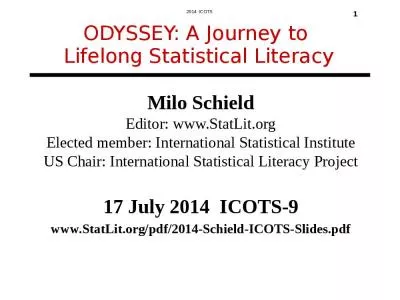PPT-Statistical Methods for Observational Studies
Author : trish-goza | Published Date : 2019-03-02
Lecture 3 of 4 Steve Fienberg Memorial Lectures Series in Advanced Analytics November 2018 Dylan Small University of Pennsylvania Slides posted at my web site wwwstatwhartonupennedu
Presentation Embed Code
Download Presentation
Download Presentation The PPT/PDF document "Statistical Methods for Observational St..." is the property of its rightful owner. Permission is granted to download and print the materials on this website for personal, non-commercial use only, and to display it on your personal computer provided you do not modify the materials and that you retain all copyright notices contained in the materials. By downloading content from our website, you accept the terms of this agreement.
Statistical Methods for Observational Studies: Transcript
Download Rules Of Document
"Statistical Methods for Observational Studies"The content belongs to its owner. You may download and print it for personal use, without modification, and keep all copyright notices. By downloading, you agree to these terms.
Related Documents

